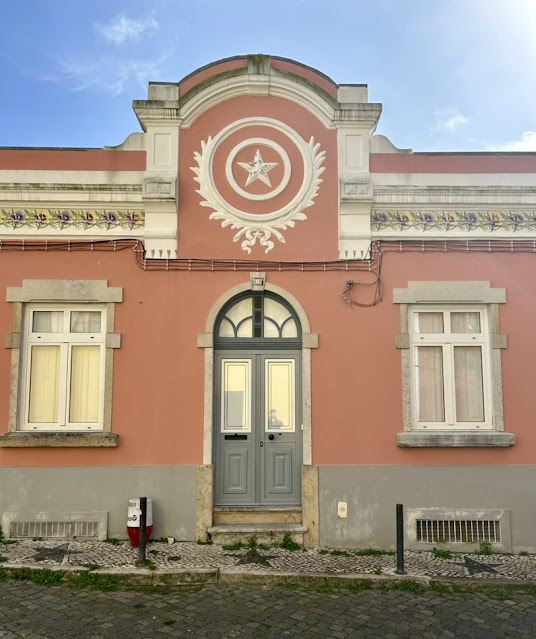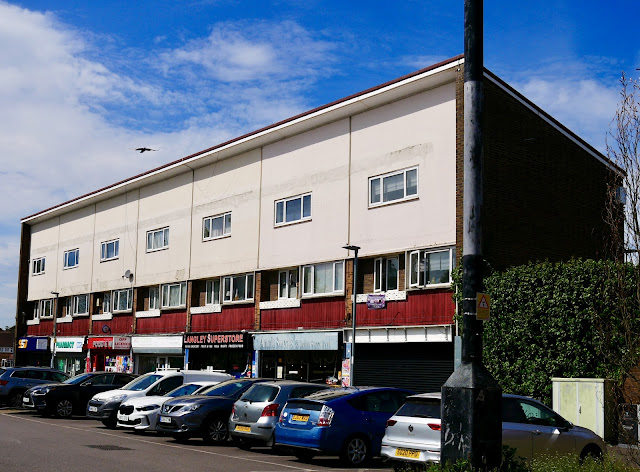Lisbon (and the little details)
I travelled to Lisbon and didn't photograph a tram.
It was the only image I could see when looking at images of the city before I went there. Tour groups are driven around Lisbon in the kind of safari vehicle you see at a theme park, I assume mainly because after one day of climbing a thousand stairs to get anywhere they were desperate for wheels and an engine.
But Lisbon is a city of beautiful detail which can be easily missed. It's a city of patterns: from tessellated tiles to the mosaic streets, and these little details provide little hints to the city's past.
When you start to notice stars being a common motif, you suspect a socialist or communist influence. Looking up, I also noticed a lot of red and yellow flags in people's windows, some with the face of Lenin. In fact, the Communist Party in Portugal is one of the oldest and strongest Communist parties in Western-Europe. The party was founded shortly after the Russian Revolution and although banned between 1926 and 1974, the party still exists today and occupies seats in the Portuguese government.
Whilst the Communist Party was banned in Portugal, the Portuguese dictator, Salazar, made Catholicism the state religion and used conservative Catholic beliefs as a means to enforce his authoritarianism. Like a lapel badge, buildings seem to have an emblem symbolising dominion of religion or politics, whether it be a white and blue painted tile of Jesus, or a modernist worker motif. Images of Jesus become theocratic CCTV.
In 1968, Salazar fell off his chair and into a coma. The Portuguese president assumed that the Prime Minister would never wake up and removed him from all power. Salazar did emerge from his coma after almost two years and as testimony to his dictatorship was told he was still prime minister for his 2 bedridden years.
In Salazar’s incapacity a swell of modernism broke in Portugal. The Palace of Justice was built between 1962 and 1970. Ministry’s of Justice are always worth visiting in a foreign city as they invariably present an aesthetic of strength and simplicity. The lack of ornament separates the judiciary from the palace owners of crown and state.
The Palace of Justice in Lisbon stands alone: a functional block that nods to the city's traditional aesthetic with tile-like blocks and a long wall of murals, but also clean concrete lines and an austere form that reads with the sobriety of the legal word.
In 1942, perennial oil business middle man Calouste Gulbenkian moved from France to Lisbon where he lived for the remainder of his life and established a foundation in his name and in 1969 the Calouste Gulbenkian Museum was built to house his fortune of artworks and antiquities.
Like most big modernist buildings it’s always hard to find a way inside, but it’s a good way to explore its exterior which is far more complex in shape than the materials used to make it. Like the Barbican, imagining the shape of the complex is almost impossible. They are spaces to be lost in.
There’s no better compliment to the clean bulk of concrete than the green of ferns, jungle leaves and long grass, even when visiting in November.
The Gulbenkian is a really successful built environment. The simply curated green of the garden grows against weathered concrete and pebbled water features. As a garden in a city, it is a place where you can just sit or be and instantly be in the calm sway of nature. Even though the majority of spaces like this were built in the 60s and 70s, the outside is timeless: it has the DNA of spaces that it feels we were always supposed to feel comfortable in.
Modernist interiors do feel a little bit more dated. The timelessness in the interiors regard more a feeling of losing track of what time it is: low lights, shadowed corners, a low hum of reverential quiet, like a VR David Lynch experience.
I looked at the gallery staff sitting in the low light on their black folding chairs and thought how different time was passing for us both and I wondered how I would spend so much time with my thoughts.
On the other side of the room, a party of school children slumped on school bags like an overflowing washing basket. I remember visiting the Barbican on a primary school trip and vividly remember the red of the carpet and the brass railings that gave everyone static shocks. These are places of peace and a balance that exists without being disturbed by noise and hyperactivity.
I Imagine this is how some people might imagine limbo: a place of being in-between where we are forced to experience the agony of time without activity, but I see moments in these places as a luxury when life becomes so busy that we rarely get to just be in a space like this. Most of these moments are spent watching our children swim, waiting for an airplane door to open, lying in bed surrendering to being awake or being without WiFi for any amount of time - a forced surrender to our own thoughts.
Architects used to design spaces for this time. Now they blame the failure of how a space makes us feel on us and our lack of appreciation and attention when the space dictates this. Dream again.









Comments
Post a Comment